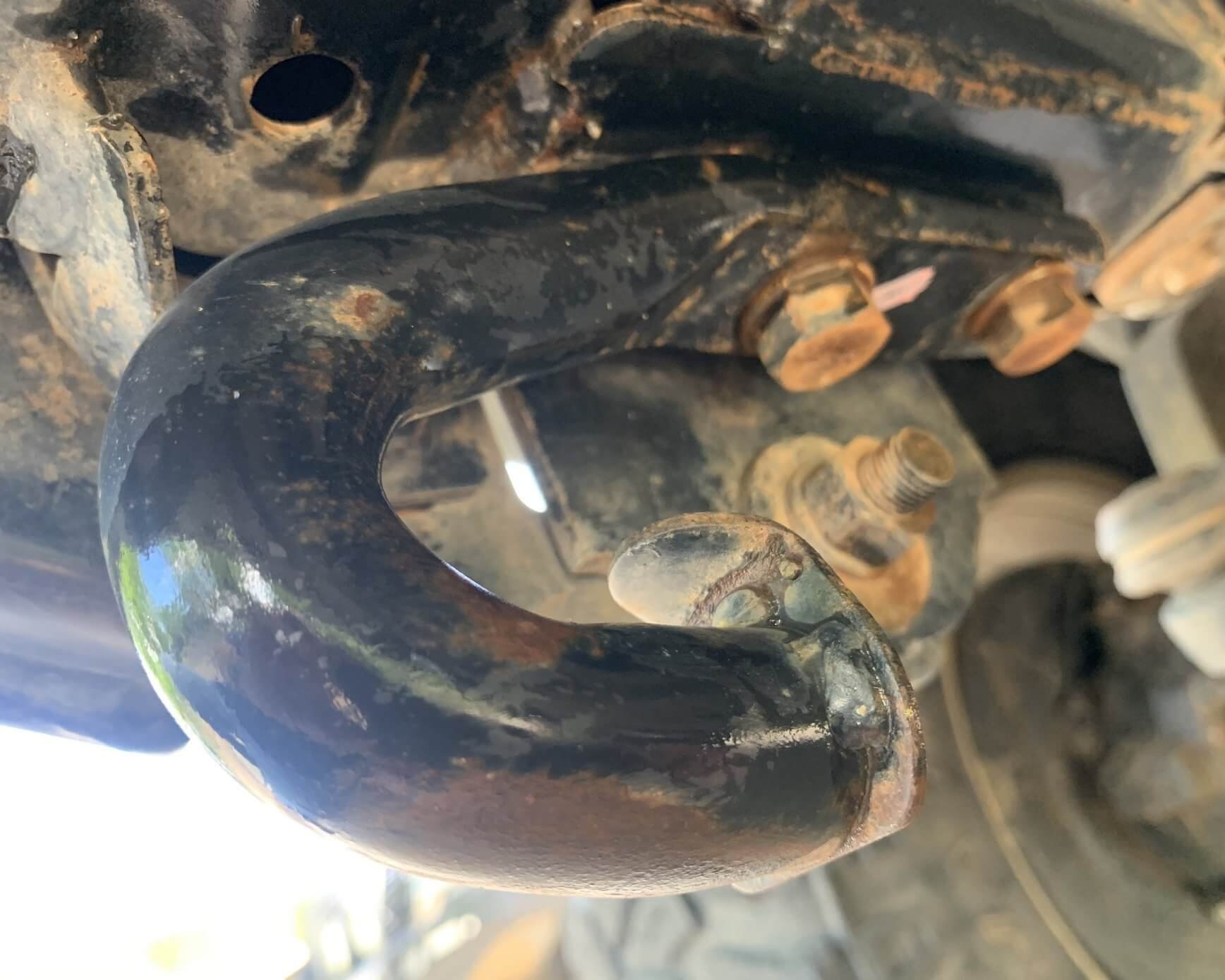Recovery Points
If you are planning to take your 4WD off-road, rated recovery points—front and rear—are essential. Having rated recovery points on both the front and rear of your vehicle allows you to recover another vehicle with your rear recovery point, and for your vehicle to be recovered in either direction.
It is essential that your recovery points are rated. Many 4WD vehicles do not come from the factory with rated recovery points. They are often an aftermarket fitting, so it is important to be able to identify a rated recovery point versus a tie-down point. Tie-down points are typically welded to the chassis. They are designed to withstand only the relatively low forces involved in securing a static vehicle during transportation. A tie-down point may dangerously fail if subjected to the forces and load of a recovery situation. Rated recovery points are typically bolted to the chassis or are integrated as part of a bull bar or rear bar, and are specifically designed and load tested to ensure they can handle the forces involved in a recovery.
Our Abercrombie River tour, in particular, incudes instruction on recovery techniques with hands-on recovery practise.
Above: Examples of front and rear rated recovery points
It is common to see vehicles with two rated recovery points at the front end. This provides the choice of using either point for best benefit depending on the recovery angles, or the redundancy of a second rated recovery point if one is inaccessible or damaged. Additionally, some bull bars and rear bars have two integrated recovery points that require the use of a distribution strap (also known as a bridle or equalisation strap) to share the load between the recovery points.
Heavy duty tow points have a 50mm receiver (not the lighter duty 40mm receiver) and are bolted to the chassis. They are suitable to use as a rear recovery point. The end of a snatch strap may be inserted into the receiver and secured with a hitch pin (although repeated use may bend the pin); however, it is better to use a recovery hitch as shown below. Some recovery hitches are designed for use with hard shackles, others are designed for soft shackles. The correct shackle must be used appropriate to the hitch. NEVER recover using any form of tow ball or tow tongue. These are designed for a gradual application of weight and may dangerously fail if subjected to the shock loading of a recovery.









